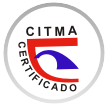Technological improvement in the drainage of Jet A-1 turbo fuel tanks to reduce contaminants in residuals from the Cienfuegos S.A Refinery
Abstract
The Jet A-1 turbo is the fuel par excellence used for civil or commercial aviation and is governed internationally by the standard (Defence 91-091, 2023), agreed by the Civil Aviation Authority of the United Kingdom. Its price in the Caribbean market is 70,85 USD/Bl. As established by the standards, this product, after settling for 4 hours in the storage tanks, all tanks must be drained in the morning, before carrying out any type of operation. However, the current drainage system for the Jet A-1 turbo fuel tanks generates economic losses and a series of contaminants, which negatively impact the treatment of the wastewater. In this sense, the objective of this work is to propose a closed system for the drainage of the Jet A-1 turbo fuel tanks at the Cienfuegos S.A.
Refinery that reduces economic losses and its environmental impact. Three technological variants of operation are presented for the system studied and are comprehensively evaluated using simulation software PipePhase v7 and dynamic profitability indicators are calculated in an economic and environmental evaluation to provide the best criteria for decision making. As a result, the V2 and V3 variants are economically feasible since their recovery period ranges between 0,73 – 1,66 years. Only the V3 variant makes the turbo drainingprocess sustainable. Using the Discrete Multicriteria Decision method, the experts decide to continue exploiting the V2 variant.
References
2. AVTUR. Ministry of Defence. Turbine Fuel, Kerosene Type, Jet A-1; NATO Code: F-35. (Defence Standard 91-091, 2023). Reino Unido. Date: December 14, 2023.
3. CUPET. Catálogo de Especificaciones de productos. Rama Combustible. OC-MM 01/C 06. [ed.] Dirección Técnica de Cupet. 2021, páginas. 16,17 y 18.
4.LÓPEZ, B.L. Instrucción de Seguridad para el Drenaje de Equipos, recipientes y Tuberías. RF-DMCP-IGS-21-02. Refinería Cienfuegos S.A, 2011.
5. LLUCH-URPÍ, J. Tecnología y margen de refino de petroléo. Madrid. ediciones@diazdesantos.es. 2008. Cap.5, pp: 68-79 ISBN: 978-84-7978-875-9. Disponible en: http://www.diazdesantos.es/ediciones.
6. NOGUERA BULMARO, A. Pipephase v7 es un software comercial de simulación orientado a la industria de los hidrocarburos y diseno de líneas de tuberías. Ingenieria Química Reviews. 2020. http://www.ingenieriaquimicareviews.
7. PDVSA. Manual de Diseño de Proceso para fase liquida para redes de flujo de fluido. Caracas. 2009. MDP-02-ff-03.
8. COUPER, JR.; HERTZ, DW.; LEE SMITH, F.. Process Economics. In Perry’s chemical engineers handbook. McGraw-Hill Education, 8th edition, section 9, table 9-9 and equation 9. 2008
9. FARRAR, N. Nelson-Farrar Quarterly Costimating: Indexes for selected equipament items. (E. Perspective, Ed.) Oil and Journal Digital Megazine.
Retrieved Diciembre 21, 2022, from http://www.ogj.com
10. DOMÉNECH, J.L. Guía metodológica para el cálculo de la huella ecológica corporativa. Argentina : Disponible en internet://www.caei.com.ar, 2006.
11. GARCÍA-MARTINEZ, V;AQUINO ZÚÑIGA, S;GUZMÁN SALAS, A; MEDINA MELÉNDEZ, A. Propuesta para el desarrollo de instrumentos de
autoevaluación para programas educativos a distancia. Revista electrónica “Actualidades investigativas en educación”. Vol 11, número 2, pp 14-17. ISSN
1409-4703. 2011. Universidad de Costa Rica. http://www.redalyc.org/artículo.oa?id=44720020017
12. SOLANO-JUVIER, R. Evaluación integral de alternativas para la eliminación de sulfuro de hidrógeno en la refinería de petróleo Camilo Cienfuegos. Tesis de
grado inédita. Universidad Carlos Rafael Rodríguez, 2014.
13. GALE, R.J AND STOKOE, P.K. Environmental Cost Accounting and Business Strategy. IÖW, USA : En Handbook of Environmentally Conscious Manufacturing. EUA: Chris Madu (Ed.) from Kluwer Academic Publishers, 2001.
14. JUVIER, O. Procedimiento para presupuestar los costos medioambientales en la refinería de petróleos de Cienfuegos. Tesis de grado inédita. Universidad
Carlos Rafael Rodríguez. 2010.
15. PETERS, M. AND TIMMERHAUS, K. Plant Desing and Economics for Chemical Engineers. McGraw-Hill International Editions. Fourth Edition. Chemical and Petroleum Engineering Series.pp:183 Table 17 and pp:210 - 211 Table 27. 1991.
16. CEPAL-SEMARNAT. Evaluación de extarnalidades ambientales del sector Energía en las zonas críticas de Tula y Salamanca. México. México : CEPAL- SEMARNAT, 2007. LC/MEX/L.788/Rev.1. 11 de septiembre
This work is licensed under the Creative Commons Attribution-NonCommercial.
![]()













 Universidad de Oriente
Universidad de Oriente 